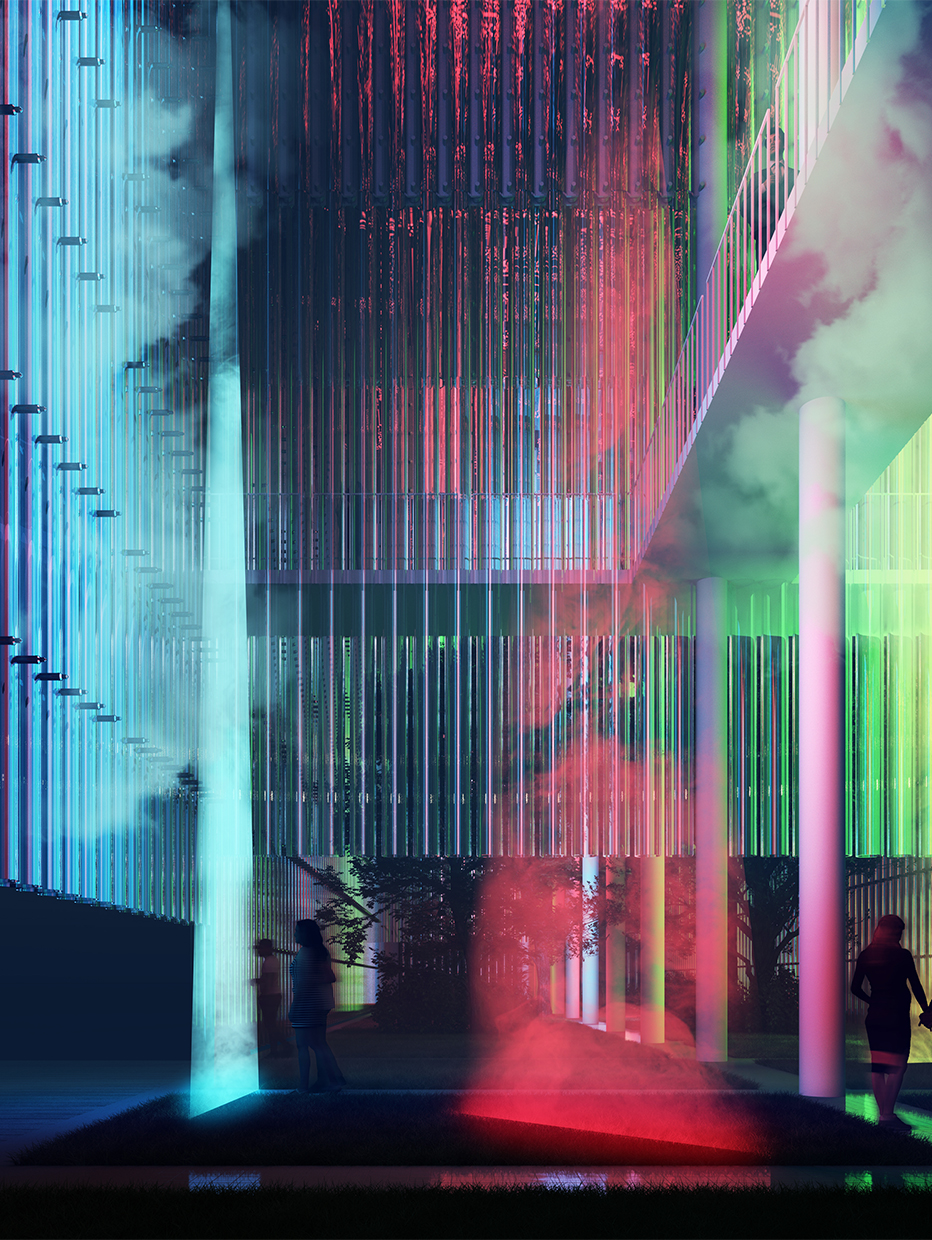The Ether

Category
Daylight investigations - Region 4: Asia and Oceania
Students
Ko Yeong Joon
Cheong Ji Hae
Teacher
Heakyung Yoon
School
Hongik University
Country
Korea, Republic of
Download
Download ↓
The Han River cuts through the heart of Seoul, and it is the soul that creates the city’s atmosphere. However, the relationship between the people and the Han River has drifted apart because of the river’s pollution levels. Han River is located relatively downstream which means that all the chemicals and wastes are collected. This proposal aims to design a pavilion that cleans Han River. Usually, this process happens in a remote facility, but this project intends to make the process visibly and physically experienceable to the visitors. By doing this, visitors are constantly reminded of the problem at hand and at the same time, they will be able to experience a new type of architecture, an architecture without physical boundaries.The pavilion that we propose manipulates water harnessed directly from the Han River and light (both natural and artificial) to create a new experience with refracting lights at daytime and light barriers at night. During daytime, a pvc pipe whose section contains a prism refracts sun’s rays visualizing various spectrums of natural light. At night, light source from the ceiling projects architectural shapes and plans onto the volumetric vapor clouds giving a new form of architectural experience.
Architecture has been a constant struggle of architects trying to curve physical matter to create space. This project uses non-physical materials (hence named “The Ether”) such as water vapors and light expanding the boundaries of architecture. Images on the right is a photograph taken from our various tests on how light behaves when it meets a volumetric body showing possibilities of creating physical spaces using smoke machine and a projector or a high intensity LED screen. The goal of this project was to recreate this effect on an architectural scale.
Mechanism1. Polluted water from the Han River is collected from the intake. Then it goes through the filter and then chemically processed so that it is clean enough to be consumed,2. The pump shoots the water upwards through the central columns and distributed throughout the pavilion via horizontal pipe networks on the top of the space frame structure.3. It is then shot through the acrylic pipes and distributed as vapors after it passes through the nozzles.4. The vapor condensates and collects on the bottom of the pavilion. The collected water is then released back into the Han River.
Opening MechanismThe facades that are made of bundles of pipes can be partially closed and opened through the above mechanism. Thus, openings can be put anywhere it is desired, and can be opened and closed independently and collectively. This mechanism also exists inside the pavilion. This acts as a barrier that separates the interior spaces into sectors with different climate settings.
Energy ProductionMost of the power consumed in this pavilion is produced by the semi-transparent BIPV panels located on top of the space frame structure.
Acrylic PipeThe pipe acts as a barrier to contain the microclimate inside. At the same time, it becomes a filter that refracts natural light and distributes the moisture throughout the pavilion. Opacity can be manipulated through the amount of moisture that is supplied. And this moisture is then scattered through nozzles creating desired conditions in each sector of the pavilion.
Light CurtainOn the bottom of the space frame, there is an array of high brightness monitors and projectors that can project geometric patterns on to the water vapor. This was tested through real life testing and the above picture was taken during one of our tests. With this system, using only water vapor and light, we can make visual barriers making new form of architecture possible.
Water TreatmentThe polluted water from the Han River is collected. Then, it is first filtered then chemically treated so that it is safe for human consumption. After that, it is shot by the pump to be distributed throughout the pavilion. The vapor that once filled the space condensates, becoming liquid again and it flows through the floor. It is re-collected and sent back into the Han River. Thus, running the pavilion alone can bring significant improvements to the water quality of Han River.

































